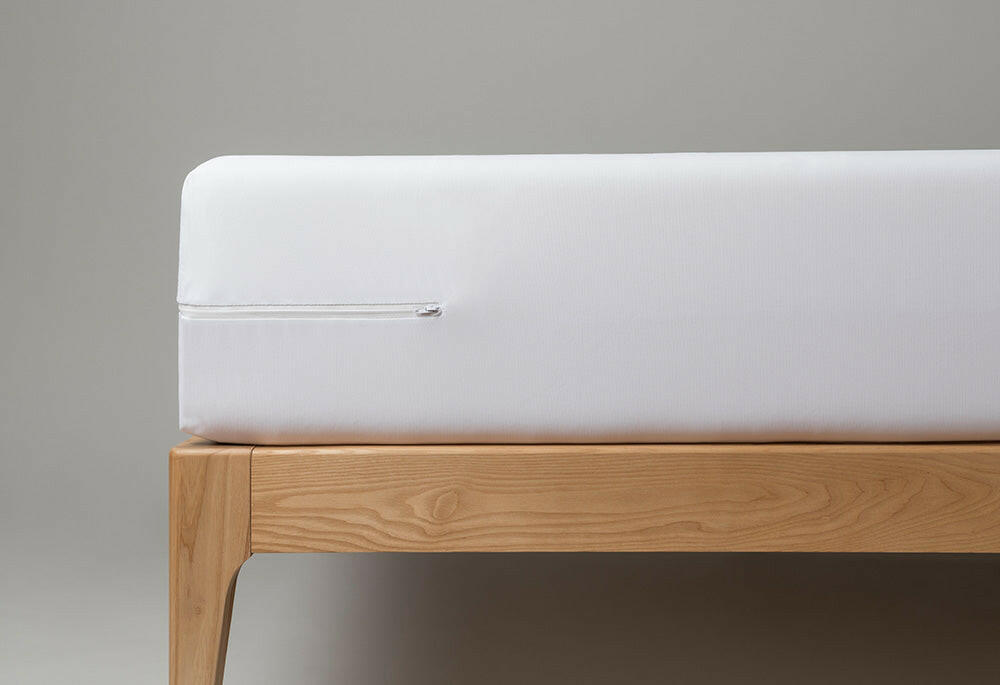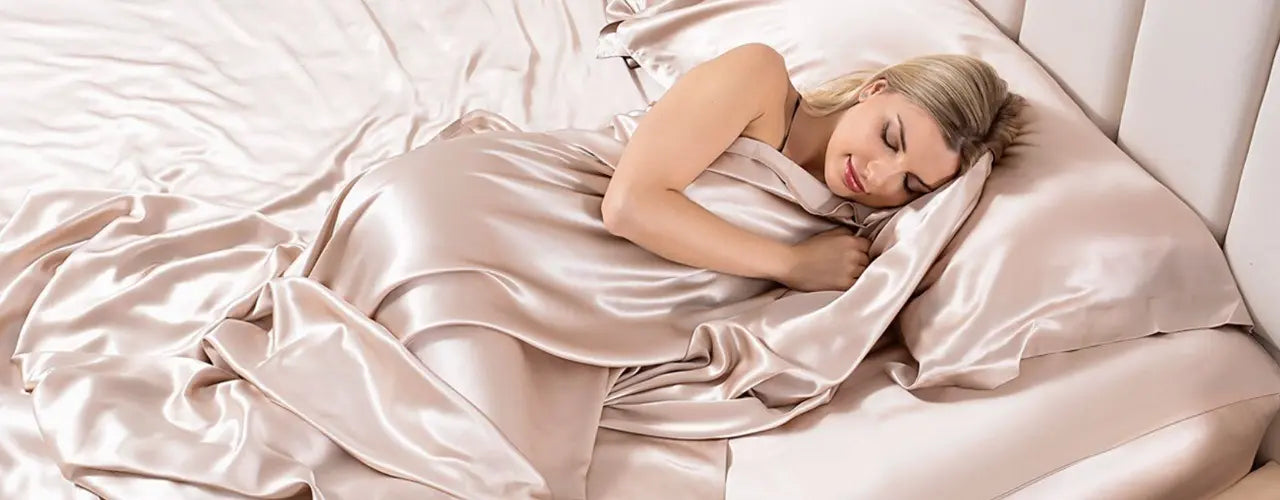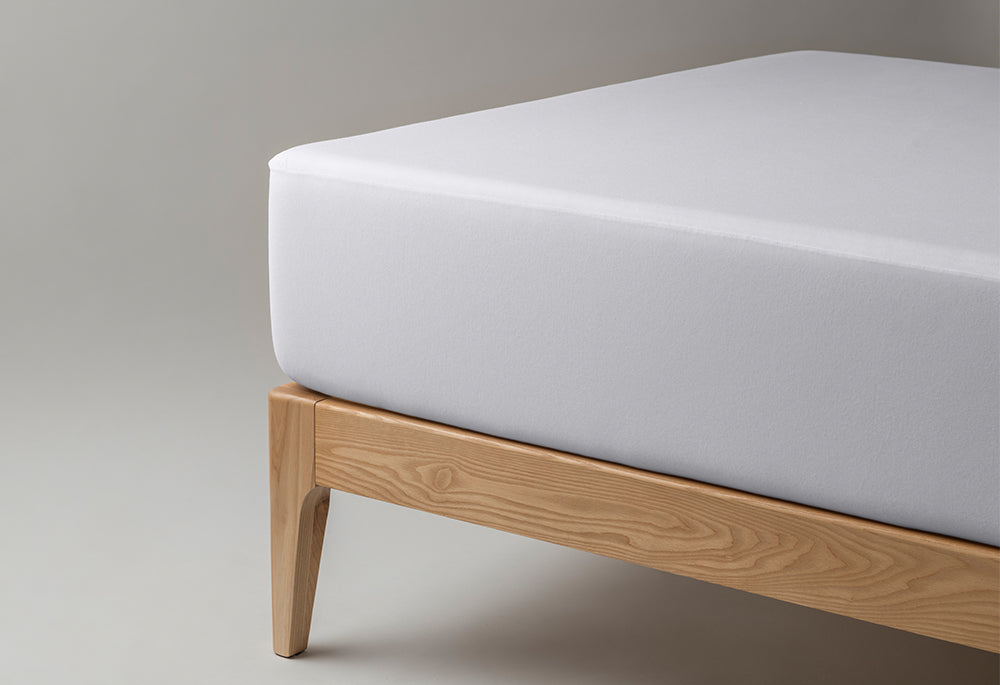Why don't mites and bacteria thrive in silk bedding?
Discover the benefits of silk bedding to combat mites and bed bugs in your bed.
Have you ever wondered why some people suffer from allergies and other health problems linked to bed bugs and dust mites, while others do not?
One reason may be the material the bedding is made of. Silk bedding is a natural antidote to these annoying and potentially harmful creatures, and it can be a great option for those looking to improve their sleep and reduce the symptoms of allergies and skin problems.
In this article, we will explore why mites and bacteria do not thrive in silk and how silk bedding can help you sleep better at night.

Increasing popularity!
Silk bedding has become increasingly popular in recent years, and for good reason. It turns out that silk bedding is an effective way to combat dust mites and bacteria in your bed. This is especially important if you suffer from allergies or other health problems that can be exacerbated by dust mites and bacteria in your bed.
What is it about silk bedding that makes it so effective against mites and bacteria?
Firstly, silk is a natural material that is hypoallergenic. This means it won’t irritate your skin and is less likely to trigger allergic reactions. Silk is also a breathable material, meaning it won’t get damp and moldy. This is important because mites and bacteria thrive best in warm, humid environments.
But it's not just the material that makes silk bedding effective against mites and bacteria. Silk bedding is also soft and smooth, making it harder for mites to settle in your bed. Mites thrive best on uneven surfaces, so if your bed is smooth and smooth, mites are less likely to thrive there.
But why is silk so effective against mites and bacteria?
Yes, it has to do with the properties of the material. Silk is a natural fiber that is produced by silkworms to protect them from bacteria and dirt inside the cocoon. The fibers in silk are smooth and soft, which makes it difficult for mites and bacteria to attach to them. In addition, silk has a natural ability to transport moisture away from the skin. This prevents it from becoming damp and clammy in bed, which is ideal for preventing mites and bacteria from thriving.
It is also worth noting that silk bedding is hypoallergenic. This means that people with allergies can sleep safely and comfortably without worrying about allergens.

Here are some of the reasons why mites and bacteria do not thrive in silk bedding:
- Naturally Antimicrobial: Silk contains natural antimicrobial properties that can fight the growth of bacteria and mold. This means that silk bedding can help keep your bed cleaner and healthier.
- Less moisture: Silk has a lower moisture absorption than other materials, making it harder for mites and other creatures to survive in your bed. This also means you can stay cooler at night and prevent dryness and irritation on your skin.
- Smooth surface: Silk has a smooth surface that makes it harder for dust mites and other creatures to attach to your bedding. This can help reduce the presence of allergens in your bed.
- Hypoallergenic: Silk is naturally hypoallergenic and does not attract dust mites and other allergens, making it a great option for those who suffer from allergies and skin problems.

Frequently Asked Questions / FAQ:
Is it common to have mites in bed?
Yes, it is quite common to have mites in your bed. Most of the microscopic creatures live in your mattress and bedding. In Norway, the incidence of mites is highest in the winter when we spend most of our time indoors. But house dust mites also thrive in the Norwegian summer. In winter, it may be a good idea to use the cold weather to remove the little critters from your bedding and mattresses.
How to get rid of mites?
Choose silk bedding and wash your bedding regularly. Every week or two is recommended. Silk bedding can be washed less often than cotton and other textiles. Vacuum both the mattress and bed base weekly. In winter, you should air out duvets outside; the cold numbs the mites so they can escape more easily. Freezing to at least -20 degrees Celsius for two days kills the mites. The colder and drier it is outside, the better. Avoid carpeted floors in the bedroom, if possible.
Can you freeze mites away?
The cold "paralyzes" the mite so that it cannot stick to the fabric of the mattress. However, it is useless to try to freeze the mites away in temperatures below -20 degrees Celsius. However, if the mattress and other bedding are stored at -20 ° C for 24 hours (in a large freezer), the mite dies and can be vacuumed away.
Why is silk so effective against mites and bacteria?
Silk has a natural antimicrobial property that kills bacteria and prevents the growth of microorganisms. In addition, silk is smooth and soft, making it difficult for mites and bacteria to attach to the fibers.
Is silk bedding suitable for people with allergies?
Yes, silk bedding is hypoallergenic and can help reduce allergy symptoms.
Can silk bedding be a good solution for people with allergies and asthma?
Yes, silk bedding can be a good solution for people with allergies and asthma. This is because silk is a natural fiber that does not attract dust and house dust mites in the same way that other materials do. In addition, silk is breathable and soft against the skin, which can reduce irritation and itching.
How often should I change my bed linen?
As with other bedding, you should replace your silk bedding regularly. It is recommended to wash your bedding every week or two to keep it clean and fresh. If you use nightwear, this may reduce the need for frequent washing, but remember that your pillowcase may be more susceptible to dirt. Silk is naturally antibacterial, and binds fewer bacteria and less dirt than other textiles. Also note that bedding wears out over time and that the qualities of silk deteriorate as it ages. Bedding should be replaced approximately every 2-3 years, depending on how much it is used.
How should I wash my silk bedding?
It is important to follow the washing instructions on your silk bed linen to avoid damage or shrinkage. In general, silk bed linen should be washed on a gentle cycle in the washing machine with a mild detergent at a low temperature. Silk is naturally antibacterial and gets cleaner at a lower temperature than, for example, cotton. Avoid drying silk bed linen in a tumble dryer, as the heat can damage the fibre structure. Instead, you can hang it up and let it air dry.
What are some of the benefits of investing in silk bedding?
Silk bedding has many benefits that can make it worth the investment. First, it is soft and smooth against the skin, which can lead to better sleep quality. In addition, it is breathable and can help regulate body temperature at night. Silk also does not attract dust and house dust mites, which can reduce allergic reactions and asthma symptoms.
Is silk suitable for all seasons?
Yes, silk bedding is suitable for all seasons. Because it is breathable and can help regulate body temperature, it can keep you cool in the summer and warm in the winter. It is also soft and comfortable against the skin, no matter the season.
Conclusion:
Silk bedding is an excellent investment for anyone looking to improve their sleep quality and reduce their exposure to dust and dust mites. Silk is a natural fiber that is soft, breathable and hypoallergenic. It does not attract dust and dust mites, and can also help regulate body temperature. Investing in silk bedding can be a simple and effective way to improve your night's sleep and your health.












